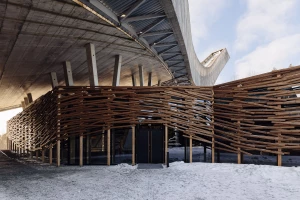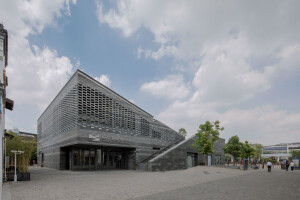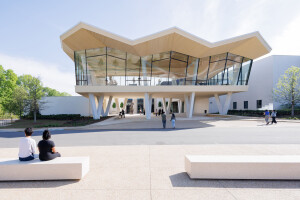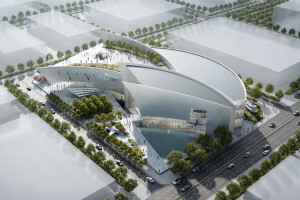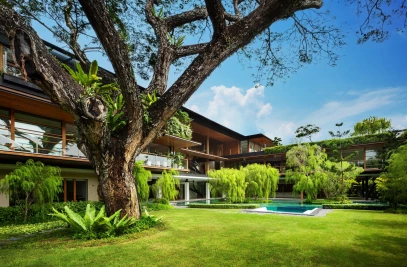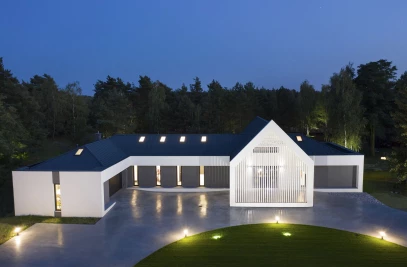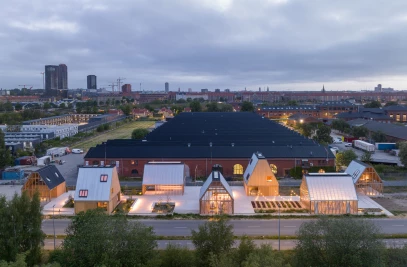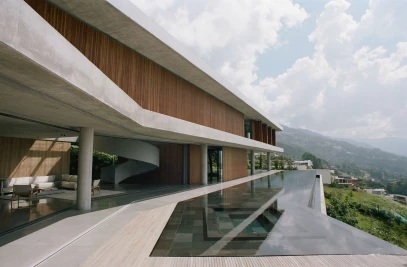Nieto Sobejano Arquitectos has completed the restoration and expansion of the Archaeologische Staatssammlung München (Archaeological State Collection Munich). Originally built between 1970 and 1975, the museum is considered one of the most distinguished examples of new museum architecture in Germany from that time. The use of Corten steel, then a relatively unknown material, was a hallmark of the museum’s identity.
Germany’s post-war modern architecture (known as Nachkriegsmoderne) produced “high-quality works that significantly influenced the urban development of German cities,” says Nieto Sobejano Arquitectos. One notable protagonist of the country’s post-war modern architecture is Helmut von Werz, an architect whose work made a significant impact on the transformation of Munich: across three decades, from 1945 to 1975, von Werz completed a number of architectural works in a range of typologies — the Archaeological State Collection Munich is a prominent example.
The Archaeological State Collection Munich underwent an extensive period of renovation between 2016 and 2024, including an expansion of the museum’s exhibition spaces and an overhaul of its functional and technical aspects. The Corten steel facades that cover the building’s cubic volumes were especially weather-worn and tired. The museum building was not officially protected by the Bavarian heritage conservation institution — it was, theoretically, at risk of wide-ranging alterations and even demolition. Nieto Sobejano proposed an approach that favored the museum’s architectural qualities and the environmental benefits of rehabilitation as contrasted with demolition. “Working within the material and conceptual constraints of a building requires discipline and restraint,” says the studio. “On one hand, it involves relinquishing the prominence of new interventions, but on the other hand it means discovering areas of freedom within the existing limits that enable transformation.”
Nieto Sobejano endeavored to faithfully restore the most prominent architectural elements of the Archaeological State Collection Munich, in a way that recognizes the existing building’s values in formal, spatial, and material terms. “The new additions are primarily limited to the insertion of a spacious public staircase, the expansion of administrative and conservation areas, and the construction of a large, column-free underground exhibition hall,” explains the studio. The museum’s entrance was also accentuated with the addition of a new cubic form.
The underground exhibition hall is covered with an exposed concrete structure: providing a large exhibition space — almost 600 square meters (6,458 square feet) — the hall can also be subdivided. A system of in-situ concrete beams, made with basaltic aggregate and black-pigmented cement, span 27-meter-long (88-feet-long) spaces across a wide horizontal area and are illuminated via perimeter skylights — as these skylights emerge from the ground, they delineate a children’s playground for the adjacent nursery, conceived as an archaeological garden. The museum’s roofs are planted with greenery, adding to the area’s biodiversity — the building faces Munich’s historic Englischer Garten public park. The museum’s extensive interior spaces were redesigned by Stuttgart-based Atelier Brückner.
The museum’s Corten steel facades were entirely replaced, while retaining the dimensions and proportions of the original design. Nieto Sobejano did modify several elements: thickness, anchoring systems, and thermal insulation. Reflecting on the transformation, the studio observes: “the building, at first glance, appears unchanged after its rehabilitation, maintaining the same precise and abstract appearance. And yet, as we approach and enter inside, we discover a completely renovated museum, where each of its spaces has been transformed to varying degrees, in an architecture that finds its freedom within limitations.”



























